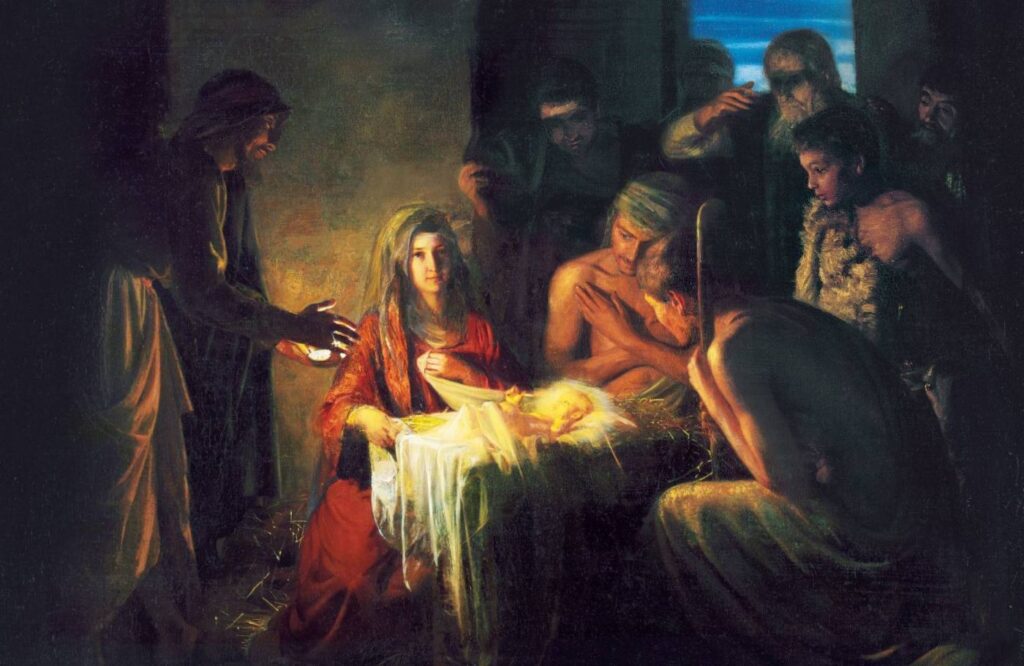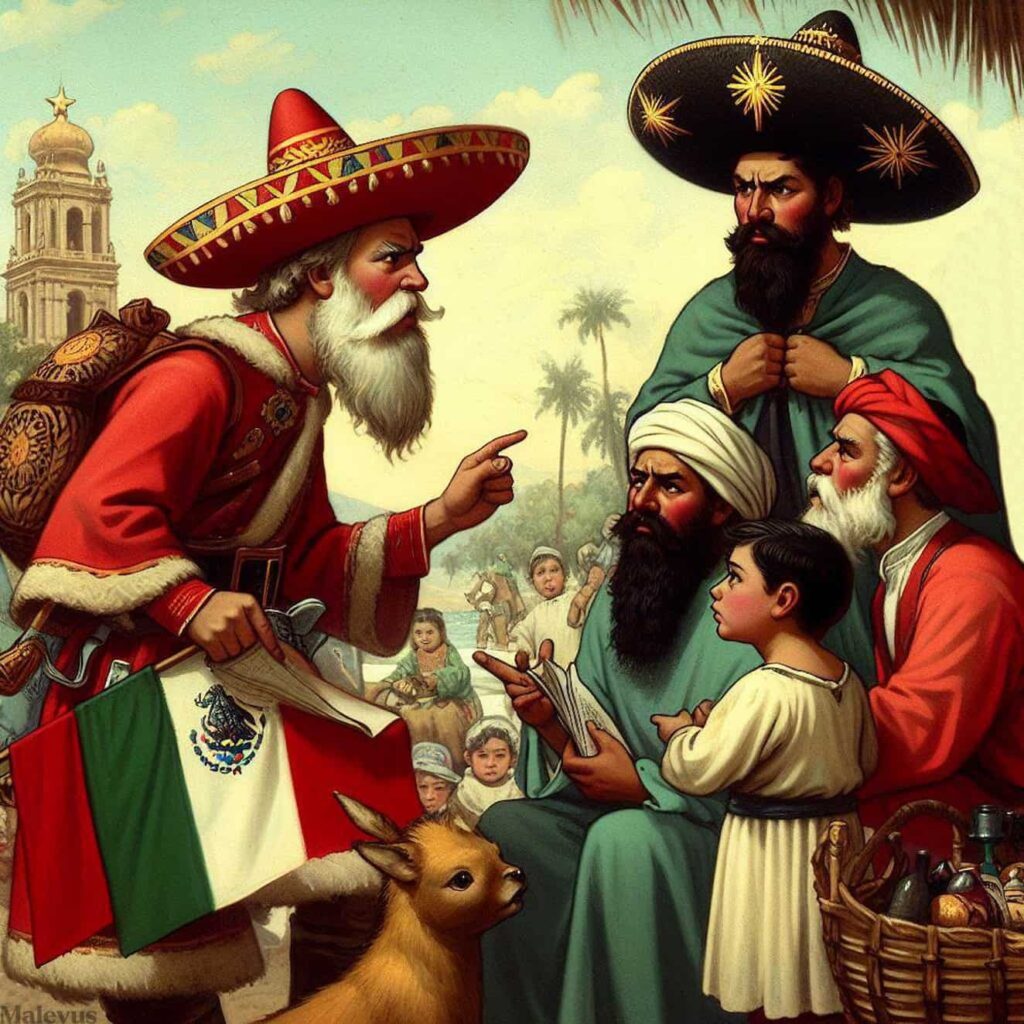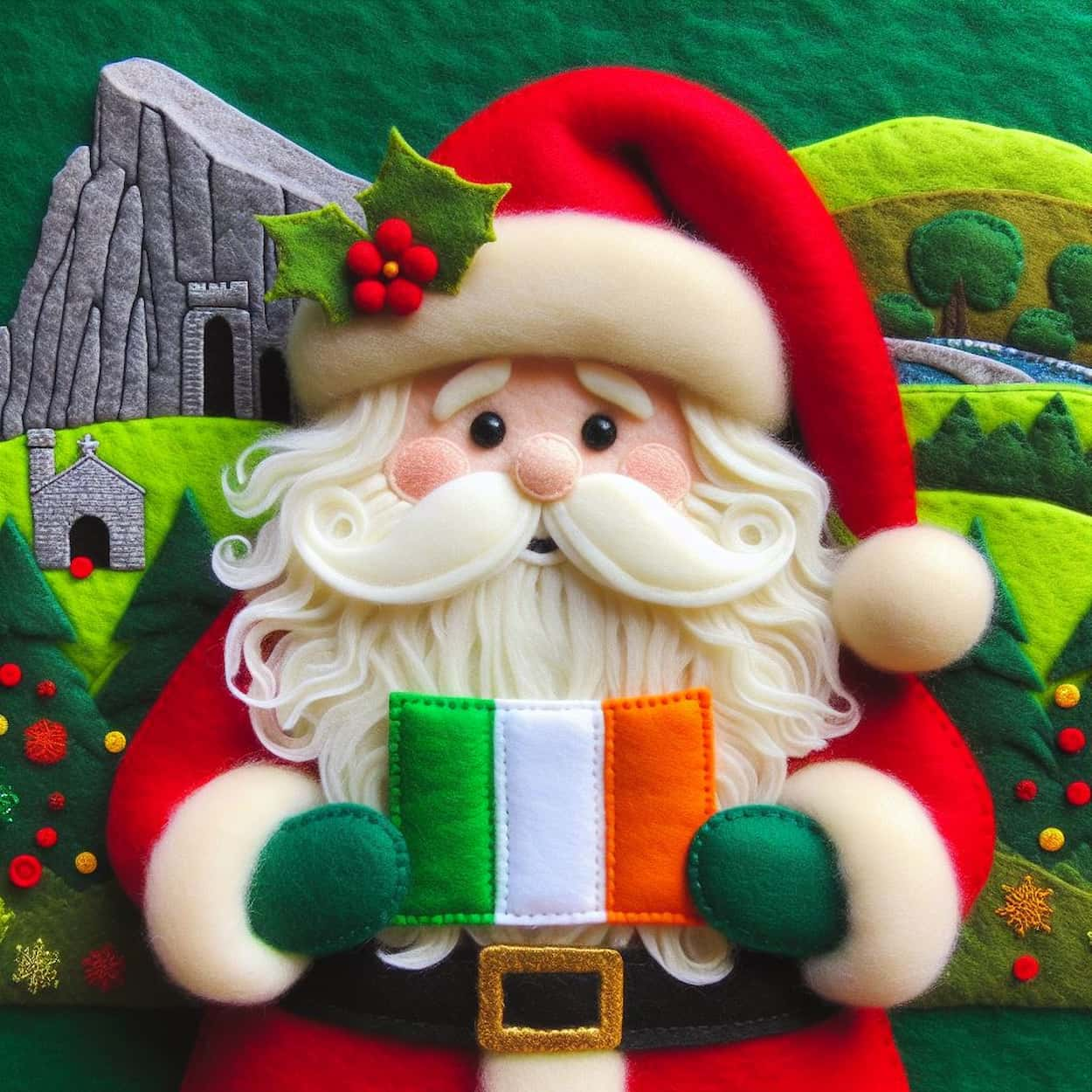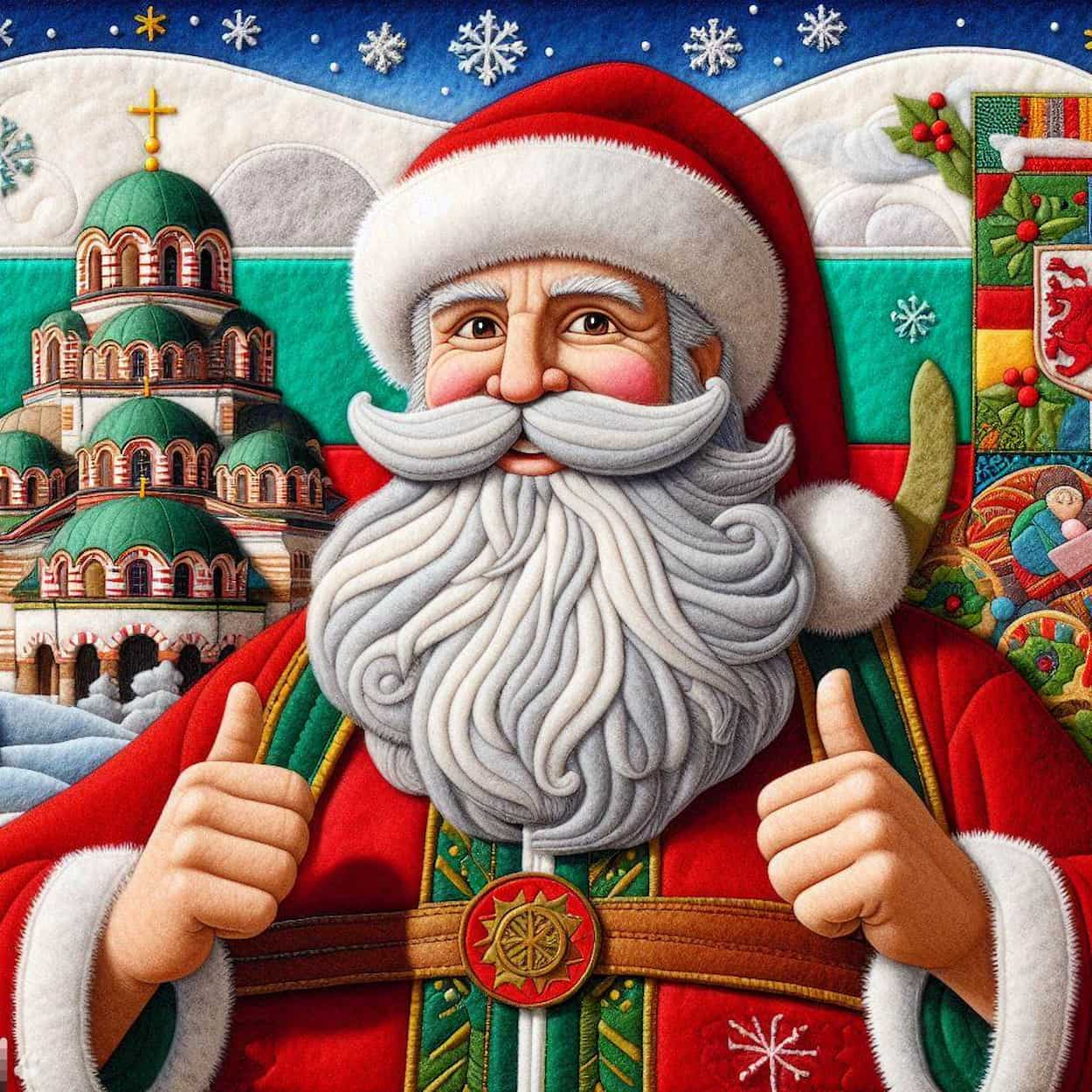In Mexico, Christmas is celebrated from December 12th to January 6th and the country features one of the most elaborate Christmas feasts in the world. It begins with honoring the Virgin of Guadalupe, followed by “Las Posadas,” where children mimic Mary and Joseph seeking shelter, visiting different homes each night for festive gatherings. “Las Pastorelas” are plays depicting the shepherds’ journey to find Baby Jesus, guided by the Star of Bethlehem. Christmas Eve, known as “Noche Buena,” concludes with a mass, feast, and family meetings. The Christmas celebrations in Mexico end with Dia de los Reyes or the arrival of the Three Wise Men, on January 6. Homes are adorned with native poinsettias and Christmas trees until the holiday ends.
-> See also: Mexican Marigold: The Holiday Flower of Mexico
Christmas Celebrations in Mexico
Elements from pre-Hispanic Mexico, colonial Mexico, and even Germany and the United States have found their way into the Christmas customs in Mexico.
Day of the Virgin of Guadalupe
December 12th
Dia de la Virgen de Guadalupe, observed on December 12th in Mexico, commemorates the Virgin Mary’s appearance to Juan Diego in 1531. Since this national holiday falls close to Christmas Eve, it has become part of Christmas celebrations in the country. According to legend, Mary appeared near Mexico City and left her image on Juan Diego’s cloak, now housed in the Basilica of Guadalupe.
It is noticeable at processions, parades, and other ceremonies. Food sellers line the streets to sell Christmas foods called buñuelos (fried dough balls), and many homes also bake them for this holiday.
Festivities commence on December 11th with Las Mañanitas (“The Mornings”), featuring songs, fireworks, and food stalls. On December 12th, over 10,000 people attend a Catholic Mass, particularly at the Basilica of Guadalupe, with regional variations such as Mexican marigold-strewn streets in Oaxaca and candlelit processions in Chiapas.
Las Posadas
December 16th-24th
Las Posadas, a Mexican Christmas tradition with 400 years of history, begins on December 16th and lasts for nine days, culminating in Christmas Eve (“Buena Noche”). During Posadas, a candlelit procession begins at a designated house, led by children in silver and gold robes carrying lit candles and Mary and Joseph images. Adults, including musicians, follow, visiting homes and seeking lodging—a reenactment of Mary and Joseph’s search for shelter. Two children portray Mary and Joseph, while others act as innkeepers.
Participants carry statues of Mary and Joseph, using blue or black candles for the Virgin Mary and Joseph and red candles for Jesus, symbolizing their journey for shelter. In small towns, candles are placed on cedar stumps near homes as a reminder of the couple’s search for refuge. The practice, rooted in caroling gatherings, signifies unity among families, especially during challenging times like the Mexican Revolution between 1910 and 1917.
Nacimientos
December 16th–January 6th

Another Mexican Christmas celebration is a significant tradition called the Nacimiento. They are detailed Nativity scenes found in Mexican households, often featuring elaborate elements like water features and miniature villages. These scenes, set up from December 16th to January 6th, come to life with the addition of various characters, including the baby Jesus and the Three Kings.
Nacimientos is part of Las Posadas which reenacts the Holy Family’s journey to Bethlehem, with costumed children leading candlelight processions from house to house, symbolizing Mary and Joseph’s search for shelter. When they find a welcoming home, figures of Mary and Joseph are placed in the family’s Nacimiento, followed by a shared feast among participants.
Nochebuena
December 24th
The night of the 24th of December or Nochebuena (“Christmas Eve”) is the pinnacle of Mexican Christmas celebrations. Beginning on the 16th of December with Las Posadas, this festive nine-evening period culminates on Nochebuena. At midnight service (Misa de Gallo or Midnight Mass), children often lead a procession to the church, where they help set up the nativity scene and place the Christ Child figurine.
The major Christmas lunch, which often includes fish specialties like cod, is shared among family members after the ceremony. The poinsettia, or flor de nochebuena (“Christmas Eve flower”), is a traditional holiday decoration in Mexico and also Guatemala.
Furthermore, on February 2nd, Candlemas Day, the host of a tamale party is decided by cutting into a traditional cake that contains a concealed baby figure. Tamales are a traditional Mexican delicacy at Christmas created by steaming maize dough stuffed with different fillings in corn husks.
Dia de os Reyes
January 6th
In Mexico, on the night of January 5th, children write letters to the Three Wise Men, expressing their dreams. While the children sleep, the Three Wise Men leave gifts, which the children unwrap early on January 6th, finding them at the base of the Christmas tree or near the Nativity scene.
Mexican families come together for a special meal and games, sharing the traditional Rosca de Reyes (King Cake), a round sweet bread adorned with dried fruits and a hidden object: a small doll symbolizing Baby Jesus. This celebration, known as Dia de los Reyes (or Epiphany), marks the end of the Christmas season in Mexico and commemorates the visit of the Three Wise Men to Baby Jesus.
For Mexican children, the Three Wise Men are the bearers of Christmas gifts, distinguishing this tradition from the role of Santa Claus. The oval shape of the Rosca de Reyes represents a crown.
Dia de la Candelaria
February 2nd
And just when you thought that Christmas was over, there is another post-Christmas holiday in Mexico called Dia de la Candelaria.
Candlemas, or Dia de la Candelaria, is observed annually on February 2. It’s a religious holiday celebrating Mary’s ritual cleansing after giving birth to Jesus and his presentation to the temple. The feast is known by many different titles, such as “Feast of the Presentation of Jesus Christ” and “Feast of the Holy Encounter”. The customs associated with the festival date back to the period of the Aztecs (1200–1500), far before the arrival of Christianity in the Americas. For instance, as a result of the significance of maize to Native Pre-Hispanic people, corn tamales and the hot corn drink atole are actually parts of Candelaria.
When first introduced, the date of February 2nd coincided with ceremonies in the Aztec calendar to implore the gods for rain and a plentiful crop. Today, it’s neither a federal nor even a state holiday but many Mexicans nevertheless hold special mass services in honor of it.
The person who discovers the Baby Jesus figure during the Dia de los Reyes feast inside a Rosca de Reyes (King Cake) on January 6th is expected to host the Candlemas celebration and prepare a large quantity of tamales for the Dia de la Candelaria. To commemorate the Virgin Mary’s supposed presentation of Jesus to the temple 40 days after his birth, Mexican families dress up the Baby Jesus doll (known as Niño Jesus) from their home nativity scene and transport it to the local church on February 2nd, the 40 days after December 25th.
Traditional Mexican Dishes Served During Christmas
The festive season in Mexico is no exception to the country’s reputation for bold tastes and spices. Here is the Christmas fare that is often eaten in Mexico.
Tamales
Tamales are a Mexican cuisine and are served at Christmas. They are steamed maize dumplings prepared with masa (corn dough) and stuffed with meat, cheese, or veggies. They originated in Mesoamerica from 8000 to 5000 BC.
Pozole
The main ingredients of the hearty soup known as pozole are hominy (dried maize kernels), meat (often pig), and other seasonings. In addition to lime wedges, lettuce and radishes are other garnishes.
Bacalao
Bacalao, a meal made with salted fish, is a Christmas food in the central part of Mexico. Romeritos (small green seepweed leaves) are also included in this dish, along with mole, potatoes, and shrimp.
Ensalada de Noche Buena
Christmas Eve, or Noche Buena, is marked by the consumption of a fruit-based seasonal salad known as Ensalada de Noche Buena (“Salad for Christmas Eve”). Apples, oranges, and pomegranates are used in its preparation, and it is served with almonds and a sugary dressing.
Pavo Navideño
Cumin and achiote are used in the preparation of Pavo Navideño, a roasted and stuffed turkey dish, also known as Mexican Turkey. It’s a staple after the midnight Christmas Eve service, and it goes well with gravy.
Buñuelos
As a Christmas treat in Mexico, Buñuelos are both sugary and crunchy. The dough is cooked and then sprinkled with sugar and cinnamon.
Ponche Navideño
During Christmas, Mexicans enjoy a nice glass of Ponche Navideño, a fruit punch (also called Mexican Christmas Punch). You may add a shot of brandy or rum to this concoction that calls for apples, pears, oranges, guavas, and spices.
Romeritos
Romeritos are small green seepweed leaves that are commonly blended with mole, potatoes, and shrimp (both in patty form and whole) and eaten with Bacalao at Christmas.
Menudo
Northern Mexicans traditionally celebrate Christmas Day with a bowl of menudo, a soup made with tripe and hominy. It’s also known as pancita and mole de panza.
The Importance of Poinsettias
The Mexican Christmas would not be complete without poinsettias. They are known as Flor de Nochebuena, or Christmas Eve Flower. The tale of a Mexican saint explains why this plant, which is really native to Mexico and Central America, has come to symbolize Christmas. One Christmas Eve, a little girl called Pepita went to church and brought a bouquet of weeds to give to the infant Jesus.
Everyone who saw the bunch of weeds was certain they had seen a miracle as they suddenly blossomed into brilliant crimson flowers.
Thereafter, the vibrant red blooms were dubbed the ‘Flores de Noche Buena,’ or ‘Flowers of the Holy Night.’ The Catholic feast of Dia de la Virgen de Guadalupe also features poinsettias. This flower is a symbol of good fortune and financial success in Mexican folklore and Mexicans utilize it extensively in their Christmas décor.
Christmas Tree and Santa Claus in Mexico
Is Santa Claus Popular in Mexico?

In Mexico, Santa Claus is not a common part of the holiday custom. In spite of this, it is becoming more common, and some Mexican kids even anticipate his arrival on December 24. He is also known as Papa Noel or Santa Clos in some regions. On Dia de los Reyes, or the Day of the Kings, observed on January 6th, youngsters search for presents left by the Three Wise Men, or Magi, who have historically been the most prominent characters of Christmas in Mexico. Despite all that, Santa Claus is gaining popularity every year.
Growing Popularity of Christmas Trees
The second part of the 20th century saw a marked increase in the number of homes in Mexico that displayed a Christmas tree. While the expat community in Mexico was the first market for imported Christmas trees, the Mexican public has subsequently embraced them.
During the Christmas season, these trees are shown alongside conventional nativity scenes. Rising disposable incomes and decreasing tree costs explain the Christmas tree’s rise in popularity. Retailers like Wal-Mart and Costco, as well as smaller Mexican supermarkets, stock artificial trees. The cultivation of Christmas trees has also become a large business and live trees are widely available in the country.
Natural trees, on the other hand, are not as common since they are more costly, and the ordinary Mexican household has a little budget. Despite this, the use of Christmas trees is on the rise. Mexico imports over 1 million trees annually, nearly entirely from the United States and Canada, to meet the country’s yearly demand of approximately 1.8 million natural Christmas trees.
However, almost 17,000 hectares of land in Mexico are dedicated to growing Christmas trees, and Mexico produces more than 1,000,000 Christmas trees for sale inside the country. In the states of Veracruz, Nuevo León, Mexico City, Puebla, Michoacán, Durango, Coahuila, and Guanajuato, the interior highlands are the primary locations for Christmas tree plantations. Many households utilize both real and artificial Christmas trees, and the trees are commonly decked with bright lights and other holiday decorations.
The Overview of the Mexican Christmas
Mexico is one of the last places in the world where Christmas still has great religious significance. The festivities have their origins in both Spanish and indigenous cultures, and the customs have permeated indigenous practices to produce a Christmas celebration unlike any other. Las Posadas, Nochebuena, Misa de Gallo, Dia de los Reyes, and Dia de La Calendaria are the Christmas holidays celebrated in the country.
Elements from pre-Hispanic Mexico, colonial Mexico, and even Germany and the United States have found their way into these customs. All the Mexican Christmas decorations are created of tin, paper, wood, fabrics, or clay, and they are often decked up with nacimientos, tin ornaments, poinsettias, piñatas, luminaries, and Christmas trees. Tamale, pozole, bacalao, ensalada de Noche Buena, pavo navideño, buñuelos, ponche navideño, romeritos, and menudo are the classic Mexican Christmas meals.






